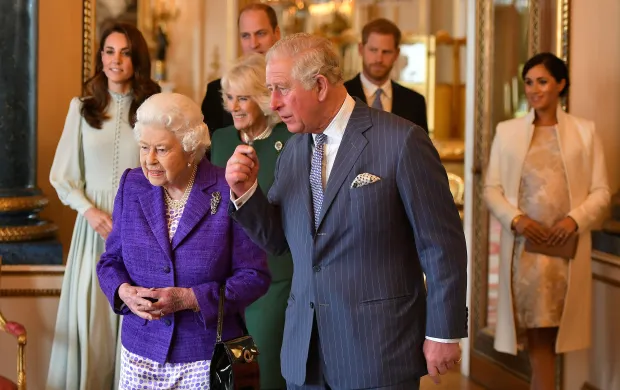In the event of nuclear war, WHITEHALL devised secret plans to evacuate The Queen and other senior royals from London.
Historians believe Her Majesty and key ministers would have been whisked away to remote lochs in Scotland to weather the attacks on “floating bunkers.”
In the 1950s, officials began developing plans for “continuity of government” in the event of an A-bomb attack.
Whitehall and Downing Street operations would have been relocated to a massive bunker in Corsham, Wiltshire, staffed by 4,000 civil servants.
The underground headquarters, codenamed Burlington, even had a BBC studio, allowing broadcasting to continue.
However, the rise of ICBM rockets, as well as concerns that Soviet spies were aware of the bunker’s location, necessitated a rethink following the Cuba missile crisis in 1962.
Instead, the plan was to disperse key personnel from London to the far reaches of the United Kingdom, leaving only core support staff at Corsham HQ.
The hope was that some would survive and use secure communications to coordinate the government’s response.
The Queen, as head of state, has sole authority to appoint prime ministers, so her safety was critical.
Operation Python went into effect in 1968, according to declassified documents released five decades later.
“The details of these dispersal plans [Python] are among the most vital of Britain’s state secrets,” a memorandum from that year stated.
Extensive plans included using ferries as “floating bunkers” along Scotland’s coast.
During the “precautionary phase,” when all-out war was feared, the Queen and other royals would have been rushed away from London to various country houses – not known royal residences.
A special unit of 1,300 soldiers was assigned to protect them.
If there was time before the actual strike – a level three “catastrophic emergency” – the plan was for the monarch to be transferred to the Royal Yacht Britannia.
The boat would have then sailed between lochs, hidden from Soviet radar by surrounding mountains.
“The Queen had to be kept separate because only The Queen can appoint a Prime Minister,” BBC Radio 4 historian Peter Hennessy explained.
“She couldn’t be with the Prime Minister and the War Cabinet because they’d be annihilated if they operated from this bunker.”
“The signal traffic would provide the [Soviets] with a very good idea of what was going on.”
Castle bunker
The plan called for the Home Secretary to support the Queen for practical reasons.
“The Home Secretary was with her so they could have a Privy Council with the Queen’s Private Secretary, the Duke of Edinburgh, and The Queen to appoint the new government out of the ruins,” the espionage expert added.
“She was going to lurk in the sea lochs of Scotland’s northwestern coast, moving from one to the other at night because the mountains would block the radar from detecting her.”
If there was no time to evacuate, the Queen could have sought refuge in an underground bunker said to be installed at Windsor Castle.
There was even a bomb pressure indicator on the castle’s lawn, allowing scientists to monitor the blast wave and see how far the devastation had spread.
The top-secret hideaway was reportedly destroyed during the 1992 fire.
According to experts, current nuclear war plans are likely to be based on the same concept as Python.
As the next in line to the throne, Prince Charles and Prince William would be whisked away to separate secret locations.
It was claimed in 2019 that the Python scenarios had been updated as part of Operation Yellowhammer’s plans for a no-deal Brexit.
According to reports, there were plans in the works to evacuate the Queen from Buckingham Palace in the event of riots.





















